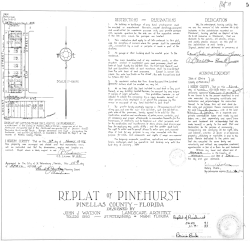Covenant (law)
In the case of leases commuted to a large sum payable at the outset (a premium), that has prompted lobbying for and government measures of leasehold reform particularly in the law of ground rents and service charges.Covenants may restrict everything from the height and size of buildings to the materials used in construction to superficial matters such as paint color and holiday decorations.In Halsall v Brizell [1957] Ch 169, a covenant requiring the upkeep of roads was found to bind the successor in title to the original covenantor because he had elected to take the benefit.For example, a restrictive covenant to contribute to the maintenance costs of a common area will not be binding if the covenantor's successors in title have no legal right to use them.[18] A positive burden can run in law, but not in equity, as it is deemed to be analogous to a contract, to which equitable principles do not apply (Rhone v Stephens (1994)).Although scholars have argued that some of the following should be significantly relaxed, in order for the burden to run with the land the following must apply:[20] US courts interpret covenants relatively strictly and give the words of the agreement their ordinary meaning."Covenants, conditions, and restrictions," commonly abbreviated "CC&Rs" or "CCRs", are a complicated system of covenants, known generically as "deed restrictions", built into the deeds of all the lots[21] in a common interest development, particularly in the tens of millions of American homes governed by a homeowner association (HOA) or condominium association.In Houston, Texas, the lack of a local zoning ordinance means that property owners make heavy use of deed restrictions to prevent unwanted development.[24] Cities known for their widespread use of racial covenants include Chicago, Baltimore, Detroit, Milwaukee,[25] Los Angeles, Seattle, and St.For example, a restrictive covenant covering a large neighborhood in Seattle declared that "no part of said property hereby conveyed shall ever be used or occupied by any Hebrew or by any person of the Ethiopian, Malay or any Asiatic Race", thus banning Jews and anyone of African, Filipino, or Asian ancestry."[27] The Lake Shore Club District in Pennsylvania sought to exclude various minorities, including "Negroes", "Mongolians", Hungarians, Mexicans, Greeks, and various other European ethnicities.[29][30]: 26 During the 1920s, the National Association for the Advancement of Colored People (NAACP) sponsored several unsuccessful legal challenges against racial covenants.Even the invalidation of such a covenant by the US Supreme Court in the 1940 case of Hansberry v. Lee did little to reverse the trend, because the ruling was based on a technicality and failed to set a legal precedent.[30]: 57 It was not until 1948 that the Shelley v. Kraemer judgment overturned the Corrigan v. Buckley decision, stating that exclusionary covenants were unconstitutional under the Fourteenth Amendment and were therefore legally unenforceable.[37] It wasn't until 1972 that the Mayers v Ridley decision[38] ruled that the covenants themselves violated the Fair Housing Act and that county clerks should be prohibited from accepting deeds with such clauses.[39] Although exclusionary covenants are not enforceable today, they still exist in many original property deeds as "underlying documents", and title insurance policies often contain exclusions preventing coverage of such restrictions.

Non-compete clauseProperty lawcommon lawPersonal propertyCommunity propertyReal propertyUnowned propertyAdverse possessionConquestDiscoveryAccessionLost, mislaid, and abandoned propertyTreasure troveBailmentLicenseAlienationEstates in landAllodial titleFee simpleFee tailLife estateDefeasible estateFuture interestremainderConcurrent estateLeasehold estateCondominiumsReal estateLand tenureConveyancingBona fide purchaserTorrens titleStrata titleDeeds registrationEstoppel by deedQuitclaim deedMortgageEquitable conversionAction to quiet titleEscheatFuture useRestraint on alienationRule against perpetuitiesRule in Shelley's CaseDoctrine of worthier titleNonpossessory interestEasementProfitUsufructEquitable servitudeFixturesPartitionPracticing without a licenseProperty rightsMineral rightsWater rightsprior appropriationriparianLateral and subjacent supportAssignmentNemo datQuicquid plantaturConflict of property lawsBlackacreSecurity depositContract lawTort lawtrustsestatesCriminal lawEvidencehistorical senseconsiderationimplied covenant of good faithcontractEngland and Walesprecedenttitle to the propertyNon-compete clausesforfeitureleasehold estateshuman rightsleasehold reformground rentsservice chargeseasementsRestatement (Third) of PropertyrecordedCommonwealthequitable servitudeshomeowner associationsfeedlotsamateur radioU.S. Federal Communications CommissionpreemptingCity of CalgaryCalgary International AirportHalsall v BrizellRhone v StephensTulk v Moxhayinfill residential developmentstatute of fraudsactual noticeconstructive noticelandlordtenantprivity of estateestate in landSupreme CourtShelley v. KraemerJim Crow eraunenforceableEqual Protection ClauseFourteenth Amendmentcovenantshomeowner associationcondominium associationzoningplebisciteplanningHouston, TexasDiscriminationInstitutionalStructuralStatisticalTaste-based